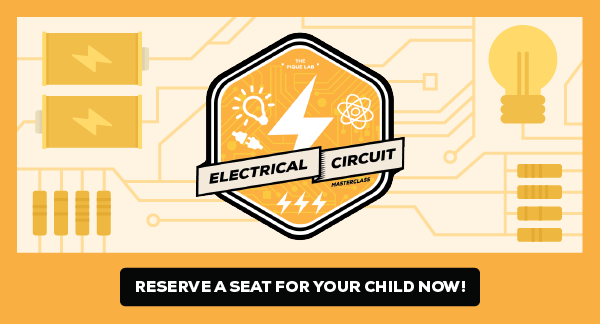If your child has learnt the topic of Electricity in school, he/she will likely be familiar with the terms “Conductors of Electricity” and “Insulators of Electricity“. Many students struggle to identify how these concepts can be tested and are unable to apply them to tackle examination questions effectively.
Read Also
In today’s article, I’ve put together a simple guide to tackle questions related to Electrical Conductors and Insulators. I will be sharing with you the exact techniques and thought processes that my students use to tackle this type of questions.
What You Must Know
Before we begin tackling the question, let us recall what conductors and insulators are, and what happens when such materials or wires connected to a circuit with a bulb.
Keeping the above in mind, let us take a look at a common question on electrical conductors and insulators.
Question

Source: Catholic High School – 2015 P5 SA2 Science Examination Paper [Q30]
Here’s A Step-by-Step Guide
Step 1: Trace all the possible complete pathways that electricity can flow through
Start tracing the pathways from one end of the battery and end at the other end of the battery.
For this question, there are four possible complete circuits that electricity can flow through. In the diagrams below, I have traced them in four different colours: purple, yellow, blue, and red.

Step 2: Indicate the lit bulbs and identify the electrical pathway(s) that allow(s) these bulbs to light up
The lit bulbs are B1, B3, and B4. This shows that electricity flowed through these bulbs, allowing them to light up.
Referring to the four possible electrical pathways that electricity can flow through, we can see that only the blue electrical pathway would allow bulbs B1, B3, and B4 to light up.
Step 3: Classify the materials based on their electrical conductivity
With the above annotations, the question becomes much easier to solve.
We can see that the electric current flows through material Y. Since material Y allows electricity to pass through it, material Y is a conductor of electricity.
We can also note that electricity did not flow through materials X and Z. Since materials X and Z do not allow electricity to pass through them, materials X and Z are insulators of electricity.
In summary, students should come to the following conclusion:

Step 4: Test whether the new positions of the conductors and insulators of electricity match the combination of bulbs that will light up
Finally, we need to test the different arrangements of materials given in the options to find the correct answer.
First, you will need to circle the conductor of electricity (material Y) in each option, as shown below. By doing this, we will be able to clearly see the positions where the conductors of electricity are.
We can observe that the conductor of electricity is placed at either position 1 or position 3.
- Circuit(s) where object Y is in position 1 → Purple and Yellow Electrical Pathway
- Circuit(s) where object Y is in position 1 → Red Electrical Pathway
To make the diagram easier to analyse, I have indicated the conductors of electricity with ‘C’, and I have indicated the insulators of electricity with ‘I’.

Circuit(s) where object Y is in position 1 à Purple and Yellow Electrical Pathway
Since conductors of electricity allow electricity to pass through them, electricity is able to flow through the conductor at position 1, as shown above.
However, insulators do not allow electricity to pass through them. Thus, there are 2 gaps:
- A ‘gap’ in the purple electrical pathway at position 2.
- A ‘gap’ in the yellow electrical pathway at position 3.
Since these ‘gaps’ result in open circuits for both the purple and yellow electrical pathway, none of the bulbs will light up when the conductor of electricity is placed at position 1.
Therefore, Options 1 and 4 are incorrect.
Now, let us take a look at what the circuit would be like if the conductor of electricity is placed at position 3. In this scenario, there are no ‘gaps’.
Again, in the diagrams below, I have indicated the conductors of electricity with ‘C’, and I have indicated the insulators of electricity with ‘I’.

Circuit(s) where object Y is in position 1 → Red
With this arrangement of the materials, we can see that electricity is able to flow through the conductor of electricity at position 3, forming a closed circuit with bulbs B1, B3, and B5. As electricity would flow through these bulbs, bulbs B1, B3, and B5 would light up.
The bulbs that would light up match the combination of bulbs given in option 2.
Hence, the correct answer is Option 2.
Summary
In this article, we’ve discussed the definitions of ‘conductors of electricity’ and ‘insulators of electricity’.
Conductors of electricity: materials that allow electricity to flow through them.
Insulators of electricity: materials that do not allow electricity to flow through them.
I’ve also shared a method for tackling a commonly tested question that uses the concept of ‘conductors and insulators of electricity’.
Step 1: Trace all the possible complete electrical pathways that electricity can flow through.
Step 2: Indicate the lit bulbs and identify the electrical pathway(s) that allows these bulbs to light up.
Step 3: Classify the materials based on their electrical conductivity.
Step 4: Test whether the new positions of the conductors and insulators of electricity match the combination of bulbs that will light up.
With the above steps, I hope that you now have more confidence in tackling application questions on conductors and insulators of electricity efficiently. 🙂
The next blog post will be the last blog post in the Electricity series and I will be sharing how to approach an interesting question regarding the arrangement of switches.
Watch this space! 🙂

If you like our approach behind solving 'Electricity' questions, perhaps you may be interested to check out our upcoming Electrical Circuit Masterclass where we'll dive deep into several answering techniques and practice questions.
Click Here To Learn More About The Electrical Circuit Masterclass >>








